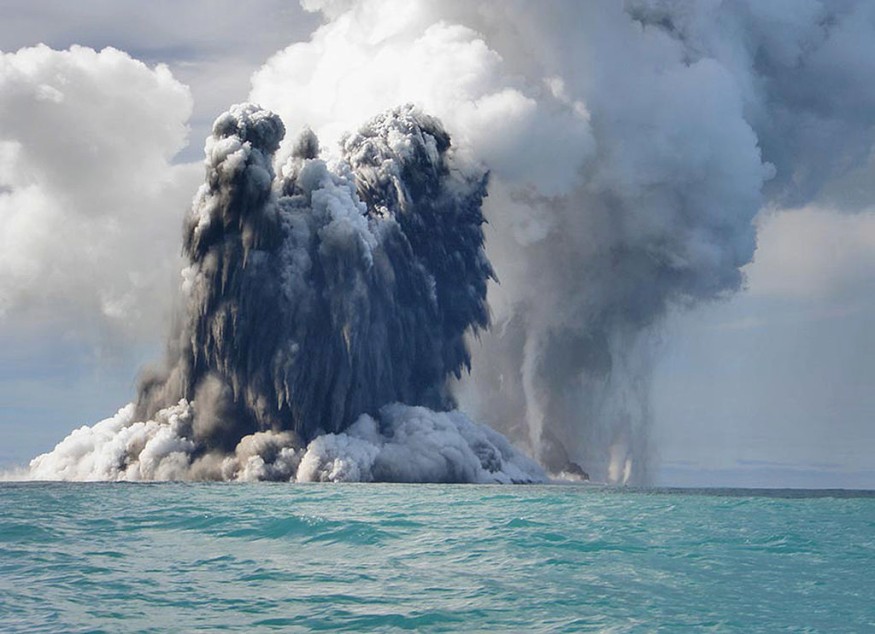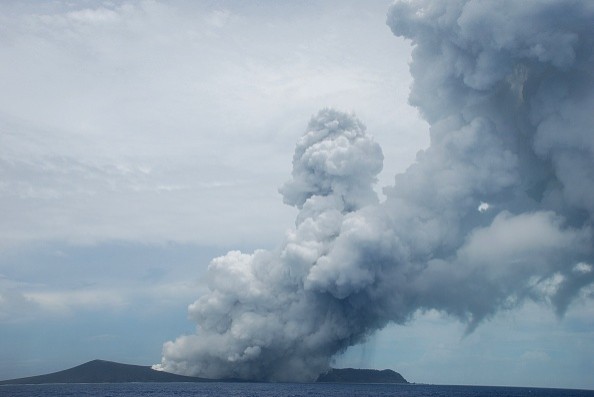The volcano Hunga Tonga-Hunga Ha'apai erupted on January 15, devastating Tonga. Tsunamis were caused as far away as the Caribbean, and atmospheric waves went around the world many times due to the eruption. Meanwhile, the volcano's plume sprayed gas and ash into the lower mesosphere from the stratosphere.
Narrative Report

Geologists have put together a tentative narrative of how the eruption evolved just two months after it occurred. Melissa Scruggs and Frank Spera, both of UC Santa Barbara, were members of an international team of researchers that published the first comprehensive account of the earthquake in the journal Earthquake Research Advances.
The authors believe that a previous eruption may have prepared the volcano for the massive explosion by burying its primary vent beneath the ocean's surface. This allowed molten rock to evaporate considerable saltwater, causing the volcanic eruption to become more intense the next day.
An Astounding Eruption
According to corresponding author Scruggs, who investigates magma mixing and eruption triggering processes and recently finished her PhD at UC Santa Barbara, this is the greatest eruption since Mt. Pinatubo in 1991.
She likened the January outburst to Krakatoa's 1883 eruption, heard 3,000 miles distant.
Tonga Volcano's History
The Hunga Tonga-Hunga Ha'apai (HTHH) volcano is a stratovolcano, a massive, cone-shaped mountain that is prone to severe eruptions regularly but normally has lesser activity. It's one of the numerous volcanoes that make up the Tofua Volcanic Arc, a chain of volcanoes fueled by magma that flows beneath the Indo-Australian Plate from the Pacific Plate.
The descending plate's rocks are cooked by heat and pressure, removing water and other volatiles. The same water lowers the melting temperature of the rock above, resulting in a 100-kilometer-long chain of volcanoes along the plate boundary.
The volcano is called after the islands of Hunga Tonga and Hunga Ha'apai, which are the highest points around the caldera's rim, or central crater. Or at least they were until the explosion blasted the majority of the islands to the skies.
Scruggs learned about the eruption while scrolling through her Twitter page before bed. "I watched a GIF of the satellite eruption, and my heart just stopped," she explained, stopping to gather her thoughts.
She realized right once that the situation would be catastrophic. "The frightening aspect was that we were shut off from the rest of the country and had no idea what had transpired."
Monitoring the Situation

As the events progressed, she was already communicating with other volcanologists, attempting to decipher the photos acquired by satellites. "All we wanted to do was figure out what occurred," Scruggs added.
The authors used whatever resources they could find to quickly define this eruption, including publicly available data, films, and even tweets.
The scientists estimated that the January 15 incident started at 5:02 p.m. using several data sources (0402 1 UTC) is the local time.
Around 13 minutes later, the US Geological Survey reported a seismic event at the vent site. The eruption was particularly severe in the first two hours, diminishing activity after roughly 12 hours.
However, activity began on December 20, 2021, when the volcano first erupted. The volcano had previously erupted in 2009 and 2014, and 2015.
These previous incidents, according to Scruggs, are crucial to understanding the violence behind HTHH's latest eruption, which might be linked to changes in the magma plumbing system at deep or the chemistry of the magma over time.
Hunga Tonga and Hunga Ha'apai were independent islands until linked by a land bridge formed by eruptions from the volcano's primary vent.
An explosion from the central vent destroyed this link on January 14, 2022, plunging the vent beneath the ocean's surface.
The same volcano, one day apart: the vent was above the water on Friday and below it on Saturday. Scruggs stated that this made all the difference in the world.
Saltwater Factoring In
The team thinks that saltwater played a significant role in the eruption's ferocity and force on January 15. An explosion of this magnitude, like a bottle rocket, requires the perfect mix of water and gas to propel it aloft.
Scientists are still putting together what happened at the volcano, so a thorough explanation of the tsunami wave is still a work in progress.
However, updating tsunami travel forecast systems to account for this sort of mechanism is a critical undertaking. Otherwise, the next time a volcano like HTHH erupts, warnings may be inaccurate, resulting in additional deaths.
For similar news, don't forget to follow Nature World News!
© 2025 NatureWorldNews.com All rights reserved. Do not reproduce without permission.





